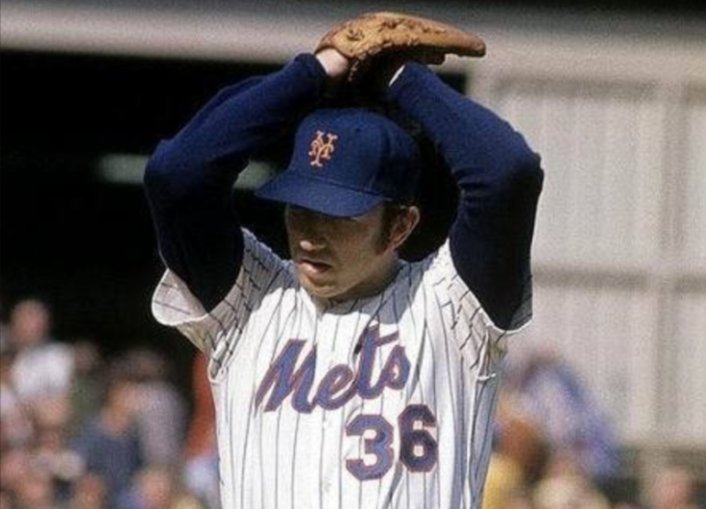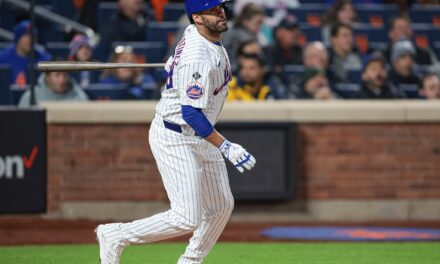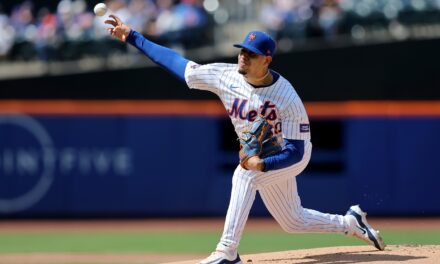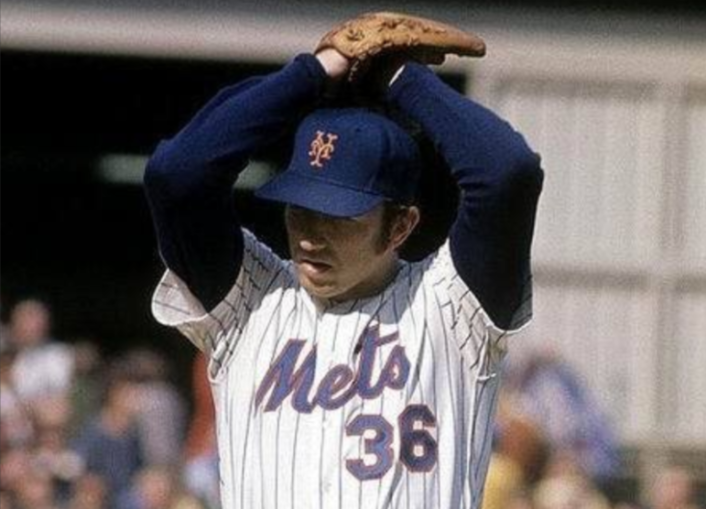
On August 28, 2021, prior to their tilt with the Washington Nationals, the New York Mets will permanently honor the winningest left-hander in franchise history. Jerry Koosman will have his number 36 raised to the rafters (or at least into the outfield) of Citi Field forever. He will join Tom Seaver, Mike Piazza, Gil Hodges, Casey Stengel and Jackie Robinson as players who have had their numbers retired.
Koosman pitched for 12 seasons for the Mets, amassing 140 regular season victories and three World Series wins.
What follows is a re-print of my tribute to Jerry Koosman, a man the Mets paid all of $1600 to obtain.
To most Mets fans, especially in this generation, Koosman is part of a familiar idiom, Seaver and Koosman, denoting the excellence in pitching the Mets had during the late sixties and seventies.
Unfortunately, Koosman’s accomplishments and inspiration to his teammates often go unnoticed due to the enormous prowess of Tom Seaver, one of the greatest pitchers in the history of baseball.
Playing a sport in the shadow of a legend is never easy, but Jerry Koosman cast a large shadow of his own and was an invaluable member of the Mets and here we will take a look at some of his career highlights, and pay tribute to a man that the Mets will rightfully honor next year as they retire his uniform number.
“This honor isn’t only for me and my family, it’s for the legions of fans I grew to love,” Koosman said in a statement. “To know that my number will be retired and sit alongside other team legends is one of the greatest tributes I could ever be granted. I was always proud to be a Met. Today, I am even prouder.”
Jerry Koosman joined the Mets in 1967. He became part of the starting rotation for the Major League club the following year. He posted a 19-12 record with seven shutouts, 178 strikeouts, and a 2.08 ERA. The wins, shutouts, and ERA set franchise records for a rookie, breaking those set by teammate Tom Seaver a year earlier.
Koosman was chosen for the All-Star game, his first of two appearances. He pitched a scoreless ninth inning to earn the save for the victorious National League, striking out Carl Yastrzemski for the final out to secure the win. Koosman was second in Rookie of the Year voting to Johnny Bench in 1968.
“Finally the Kooz gets his due! Jerry Koosman was such a terrific pitcher & important part of the ‘69 Mets. Having his number retired is fitting for what he’s meant to the Met organization & his teammates. Congratulations & well deserved.” That from teammate Art Shamsky.
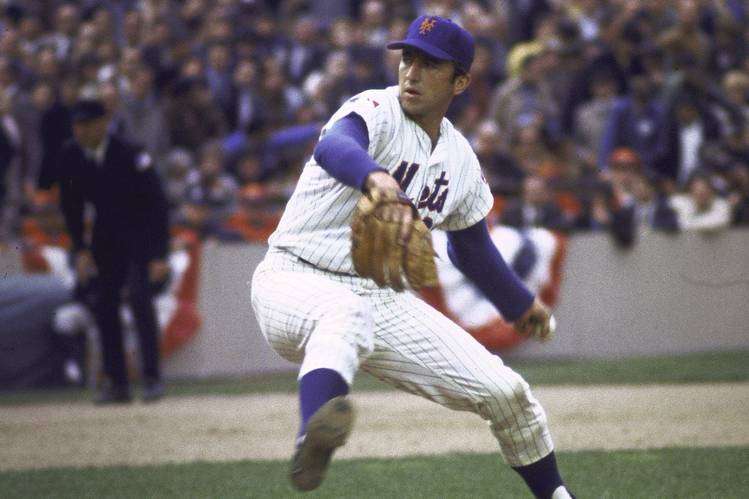
In 1969 Koosman posted a 17-9 record with a 2.28 ERA and 180 strikeouts in another All-Star season. But this season was special as the newly formed NL East had a surprise winner.
After trailing the Chicago Cubs for most of the season, the Mets caught them and won the division going away. Koosman won eight of his last nine decisions to help in the cause. After getting hit hard in the first-ever NLCS, he was the clear pitching star in the 1969 World Series.
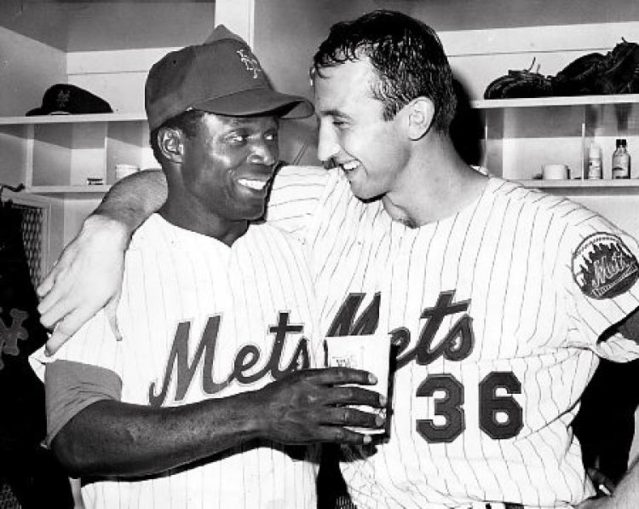
Koosman pitched 17 2/3 innings in the 1969 Fall Classic, notching two wins including a complete-game victory in game five. Koosman, in only his second major league career, was getting the reputation as the Mets’ money pitcher, their go-to guy in a must-win situation. After Seaver lost to the Baltimore Orioles in Game 1, they needed a stopper, and Koosman was every bit of this and more.
In Game 2, Koosman took the mound and proceeded to no-hit the Orioles for six innings. He won the game after going 8 1/3 innings, allowing only one run on two hits. The Mets won games three and four and then Koosman pitched what turned out to be the final game of the Series.
Who can forget Koosman leaping into Jerry Grote‘s arms after the last out was made…an enduring image in Mets lore. Shortly thereafter, Cleon Jones, who made the last out of the World Series, gave Koosman the game ball for game 5. There are many baseball historians who feel Koosman was the better choice for MVP of the Series than winner Donn Clendenon.
“Jerry Koosman is a Mets legend, will be an honor to be alongside of him!”. Mike Piazza, whose #31 is also retired by the Mets, made this quote upon learning the Koosman was to receive the same honor.
In 1970, Koosman was 12-7 with a 3.14 ERA. He was often the victim of poor run support. In 1971 and 1972, he had losing records after suffering an arm injury in 1971. Koosman won his first five starts in 1973 but finished with a 14-15 record.
Koosman was strong down the stretch in 1973, pitching a then-record 31 2/3 consecutive scoreless innings. He, Seaver and defending Rookie-of-the-Year, Jon Matlack led the way as the Mets once again overcame a deficit to the Cubs to win the National League East.
In the playoffs, Koosman once again showed his mettle. In game three of the NLCS against the Cincinnati Reds, Koosman pitched a complete game for a 9–2 victory in a game that was headlined by Pete Roses‘s altercation with Mets’ shortstop Bud Harrelson. Koosman and Rose would get together years later in an historic moment.
Koosman also won game five of the World Series against the Oakland Athletics holding the A’s scoreless for 6 1/3 innings. The win gave the Mets a three games to two lead in a series they eventually lost in seven.
“I’m enormously proud of the time I played in the orange and blue uniform of the Mets”, Koosman said in a statement after the announcement his number was to be retired.
Koosman’s best year may have been 1976. He went 21-10 with 200 strikeouts. Koosman finished second in the Cy Young voting to Randy Jones, even though Koosman’s stats were for the most part decidedly better.
After Seaver was traded in 1977, the Mets went downhill and with no foreseeable changes on the horizon, Koosman requested a trade in 1978. He went on to pitch for the Twins, White Sox, and Phillies. As a member of the Phils, he allowed Pete Rose‘s 4000th hit, a double, in 1984.
“The excitement of playing for the Mets when we won the 1969 World Series was an experience I never thought I’d be able to repeat,” Koosman said in a statement. “But the news that the Mets Hall of Fame Committee has voted to retire my number is another life-changing thrill and honor.”
Jerry Koosman was a dominant pitcher for the New York Mets. He won 140 games and pitched to a 3.06 ERA in his 12 years with the team. He still holds the franchise record for wins by a lefthander. His performances in big spots were unmatched on a team that carried a Tom Seaver and was known for its pitching. He was inducted into the Mets Hall of Fame in 1989.
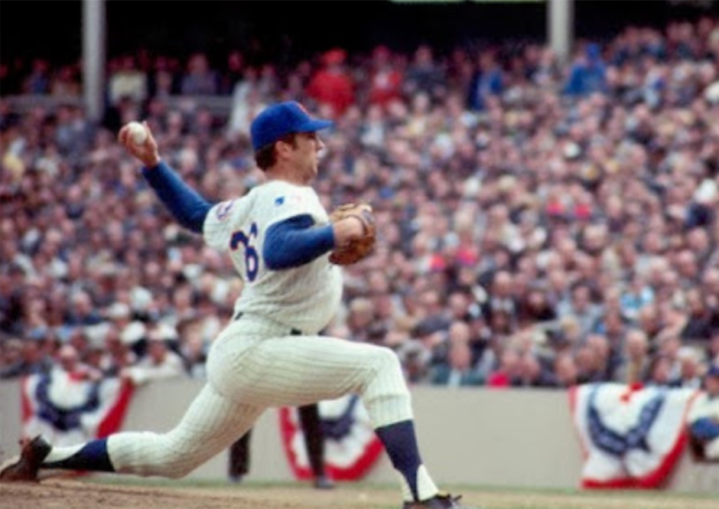
The collection of quotes here is just a small sample of what others feel about Koosman and how Koosman feels about having his number retired. He was often in the shadow of a great man, but cast a large shadow of his own. The make-up of this man is described nicely when he said:
“For me it was that you can dream big. I was born and reared on a farm in western Minnesota and dreamed of winning the World Series as a kid. So to see that come true it’s almost overwhelming.”
“If I would have told somebody that I was going to win the World Series in New York City when I was a kid, they probably would have laughed. I did it, though, proving that anything is possible if you set your mind to it and work hard. It doesn’t matter where you come from or how you are raised. Anything is possible in this country. Anything.”
This quotation, from World Series Winners: What it Takes to Claim Baseball’s Ultimate Prize by Ross Bernstein, accurately describes the man who from humble beginnings, became a big-city icon. It was uttered by Jerry Koosman after the Mets won the 1969 World Series. It is a phrase that shows both his humbleness and motivation. It is a quote that, in a nutshell, captures Jerry Koosman perfectly.


